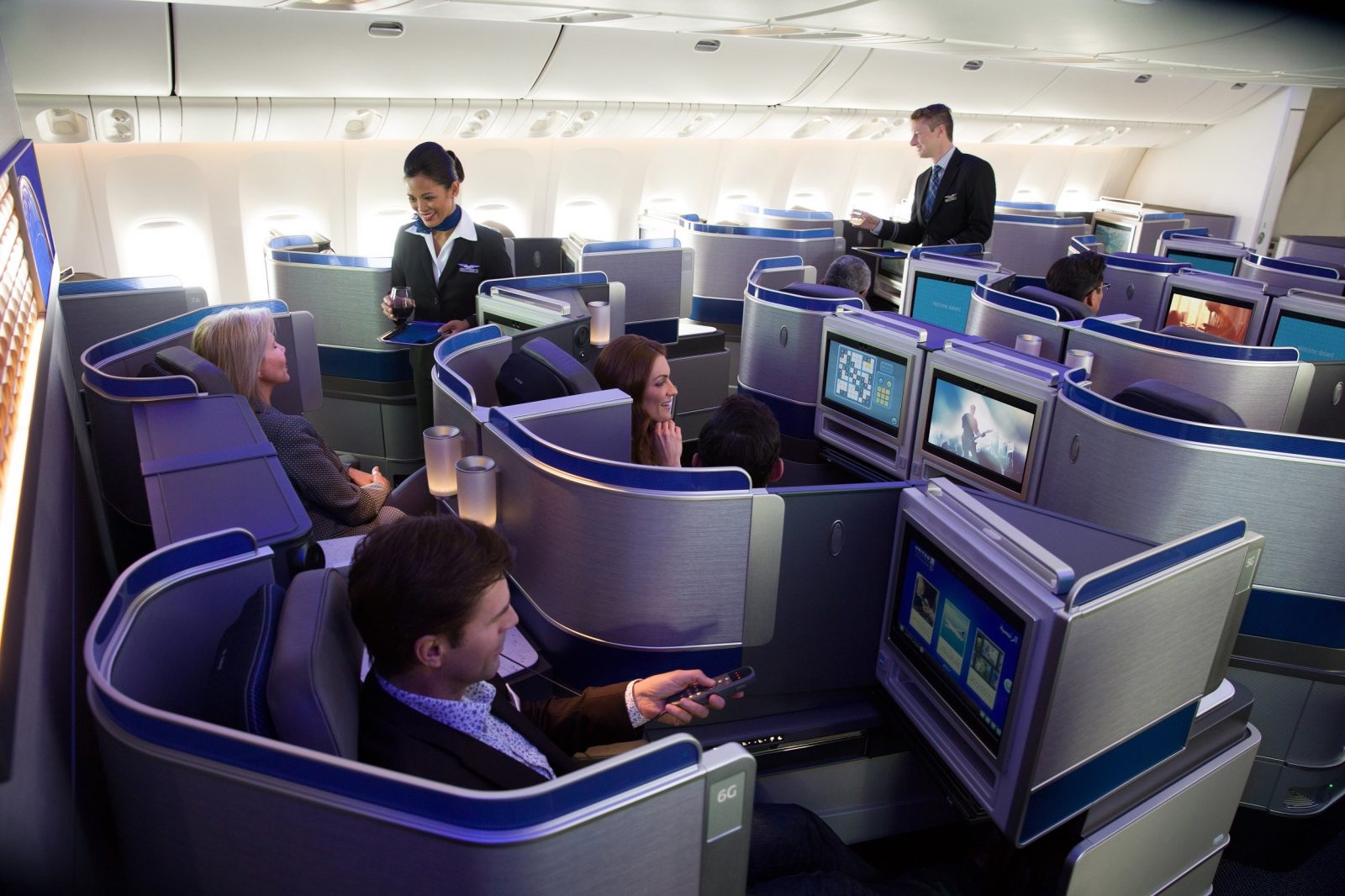
It may have been nearly eight years since U.S.-based airlines United and Continental agreed to merge into a single carrier but the mega-airline is still in the process of finalising some of the work agreements of legacy employees. And now, United has announced plans to end an unpopular variable staffing model for flight attendants.
The rule change will specifically affect staffing levels on United’s Boeing 777-300 long-haul aircraft, with the biggest change coming in the Business Class Polaris cabin. It follows an update from United’s John Slater, the airline’s Senior Vice President of Inflight about what work was still going into “harmonizing” the variable staffing model.
At present, the 60-seater Polaris cabin is variably staffed based on how many passengers have booked to travel in the cabin. A total of five flight attendants can be rostered to work in the cabin, bringing the total number of crew to 13 throughout the aircraft. Federal regulations require at least 10 flight attendants onboard.
But the current policy failed to account for the high number of upgrades, last minute bookings and operational changes. As a result, many flights were being operated with fewer flight attendants than the airline had actually designed the service to be operated by.
From August 1st, however, the variable staffing model with be discontinued in the Polaris cabin and a full complement of five flight attendants will be rostered to work on every flight. This should be a win-win for both passengers and flight attendants – ensuring there’s enough staff to carry out the service and giving crew access to the trips they want to work.
The variable staffing model will remain in the Economy Cabin, although there will be some minor changes. On particularly busy flights with a load factor in Economy of 90%, the airline will now roster an additional flight attendant – bringing the total number of crew onboard to 13.
In comparison to other airlines operating the same aircraft, these staffing levels are still relatively low. Emirates, for example, recently cut the number of flight attendants on its 777-300 fleet but still has one more flight attendant than United. Meanwhile, British Airways operates the same aircraft variant with 18% fewer seats but the same number of flight attendants.
The Association of Flight Attendants which represents inflight staff at United says it has long campaigned for a change to the variable staffing model. Hailing the changes as a victory, AFA explains that there should be approximately one flight attendant responsible for 20% of passengers.
Based on their feedback, an additional flight attendant will now be rostered on most international flights when the load factor reaches 80%. Unfortunately, United will continue to staff domestic flights according to the minimum crewing levels mandated by Federal authorities.
Mateusz Maszczynski honed his skills as an international flight attendant at the most prominent airline in the Middle East and has been flying ever since... most recently for a well known European airline. Matt is passionate about the aviation industry and has become an expert in passenger experience and human-centric stories. Always keeping an ear close to the ground, Matt's industry insights, analysis and news coverage is frequently relied upon by some of the biggest names in journalism.







